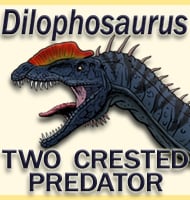Pandoravenator
In Depth Pandoravenator is a genus of predatory dinosaur that lived in South America during the Late Jurassic. Further Reading - A theropod dinosaur from the Late Jurassic Ca�ad�n Calc�reo Formation of central Patagonia, and the evolution of the theropod tarsus. - Ameghiniana 54:506-538. - O. W. M. Rauhut & D. Pol - 2017.
